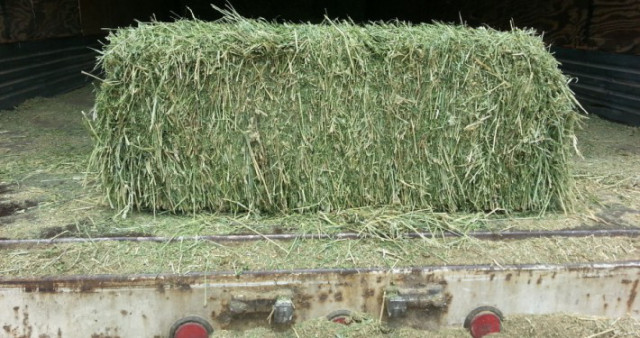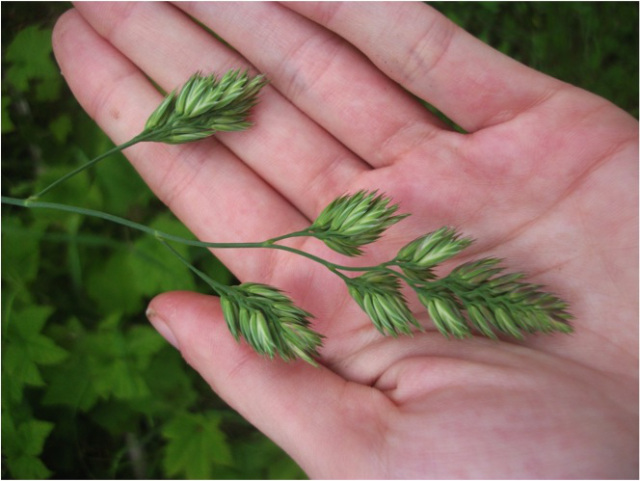What Can You Tell By Just Looking At Hay?
09/03/2017

by Eleanor M. Kellon, VMD
There’s a lot you can’t tell by looking but appearance does yield some useful information. Just the type of hay is a helpful start. Legumes (clover, peanut, alfalfa) are always high protein and calcium. Bermuda will be low protein unless fertilized. Ryegrass and grain hays tend toward high sugar, plus starch in the grain hays. Contrary to popular belief, there is no type of grass hay guaranteed to be low sugar and starch.
Seed heads are the easiest way to identify a grass hay. Timothy’s fuzzy, long seed heads look like a green or beige caterpillar. Bermudagrass seed heads resemble the spokes of an inside-out umbrella. Teff grass seed heads are a bouquet of long, graceful sprays with the multiple thin straight strands having a chain of individual seeds. If you don’t know what to look for, take a sample of the hay, including seed heads, to your local agricultural extension office.

PHOTO: Orchardgrass seed heads have a tree-like branched shape with seeds clustered in a tuft or fan configuration at the end of each branch.
Ideally you want an obvious green color. Color isn’t necessarily a deal-breaker if you know why the hay is yellowed instead of green. It may be old, sun bleached or rained on after cutting. All yellowed hay is low in the vitamin A precursor carotene. If only sun-bleached, the inner layers will still be green and loss is minimal. If old and yellow throughout it will also be very dry and the leaf/blade portion more likely to crumble and be lost, greatly reducing nutritional value. Rained on hay will have lower sugar, thus lower calories, and lower (but likely still adequate) potassium.
Seed heads also yield clues to likely calorie and sugar/starch content. If no seed heads or they are very green and firm, seed has not yet set (this is called “boot stage”) and sugar/starch will be higher. Seed heads that are tan but still contain seeds will contribute to the overall caloric value of the hay, while old empty seed heads belong to very mature grasses with likely lowest sugar/starch, calories and protein. You also want to see a large proportion of leaf/blade material compared to stiff stems.
Bales that feel unusually heavy for their size are often high moisture, moldy or contain stones/dirt. Always open a few bales even if you have to buy them first. Never buy hay that feels moist or warm on the inside. It’s going to mold. It should have a fresh, “sweet” hay aroma. No or off odor indicates molding or very old hay. When you open a bale, there should be no puff of fine dust. This may be dirt or it may be molding. You don’t want either. Obvious molding, chunks of dirt, stones or other foreign material, and presence of weeds are all reasons not to purchase.
If a hay has passed the important visual assessment you will still need hay analysis to get in-depth nutritional information. Calories (DE – digestible energy), crude protein and important mineral levels are all part of the analysis. Sugar and starch levels can be obtained. Hay (or pasture) is by far the major part of most equine diets. The critical information you need to identify and correct deficiencies and/or imbalances can only be obtained from an analysis.
For more informationon on where to get your hay tested in the US and internationally , please see https://www.ecirhorse.org/DDT+E-diet.php

